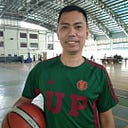Changing Landscapes
by Oliver Carlos
We historians get fascinated in discovering what structures used to stand on the same spot of familiar buildings today. More so, we also delight in walking over the exact places where certain big historical events happened. A life reality that we historians understand fully well is that landscapes change constantly.
After the long hard lockdown in 2020, I took my parents to a joyride in the upper UPLB campus. We all haven’t been to that place for a long time. When we reached the far end of the Forestry campus, a big surprise welcomed us. We saw a new structure standing in front of the MAREHA dormitory. It looks like a multi-purpose hall that has just mushroomed from nowhere. It made me feel that I haven’t been to this spot for a long, long time. The place looked so alien. Or maybe, I’m the alien!
What used to be on that same spot was a basketball court and a volleyball court. Both facilities were open courts, or roofless. They were built in the 1970s. On those courts were where the Forestry community people had fun playing the sport they loved.
I had great memories of that basketball court. That’s where I trained when the courts in the lower campus were crowded. I loved the serene atmosphere of the Forestry court. That’s also where our church held sports activities. One memorable game was when I fouled out in the 1st quarter trying to guard our 6’9” churchmate from the Netherlands, Harm Bauta. He’s called The Dunking Dutchman.
I felt mixed emotions when I saw that the court was no longer there. It’s nice to see a roof over that spot, but I didn’t see any basketball goal nor lines on the floor, so I guess it’s not a basketball gym that they built.
I was surprised when my Dad narrated the history of that place. He was a college student in the 1960s and he saw the transformation of that piece of land. He said that on that exact same spot of the court once stood the big old Faustino house. Dominador Faustino, Sr. worked in the Forest Products Research and Development Institute, he’s a big name in campus. His son Dominador Jr. was my Dad’s brother-in-law. He’s also the one who inspired the Castillo brothers to take up BS Forestry in UP in the 1960s. When Dominador Sr. retired, he moved to a new residence elsewhere, and his old house was converted into a basketball court by the university.
In the Bible, there’s a similar “same-spot-different-events” situation. In the Old Testament, Abraham was asked by God to sacrifice his son Isaac. He went to a mountainous place called Moriah, built an altar and laid down his son on it. But just in time, God halted Abraham and provided a ram as Isaac’s substitute on the altar.
Two thousand years later, on the exact same spot, Jesus was crucified. The region of Moriah is where Jerusalem sits, including the mound known as Golgotha in Jesus’ time. We modern people call it Calvary. Like the ram on Isaac’s place at the altar, Jesus’ death on the cross was also a substitution act. We should have been on that cross, but he died in our place. That’s why one of Jesus’ nickname is “The Lamb of God.” Like the sheep that God provided for Abraham, Jesus is the solution to our predicament. Isaac lived because of the sheep, and we too get to have eternal life because of the Lamb of God who takes away the sins of the world. God is the gracious provider of our greatest need- the need to be saved. We read in Genesis 22:14 (NLV):
“Abraham gave that place the name “The Lord will give us what we need.” And it is said to this day, ‘On the mountain of the Lord it will be given.’”
It’s wonderful to reflect on these things. In doing so, we get to understand the greatness of God’s love and concern for us. Will you accept Jesus as your Lord and Savior, so that you may receive eternal life?
